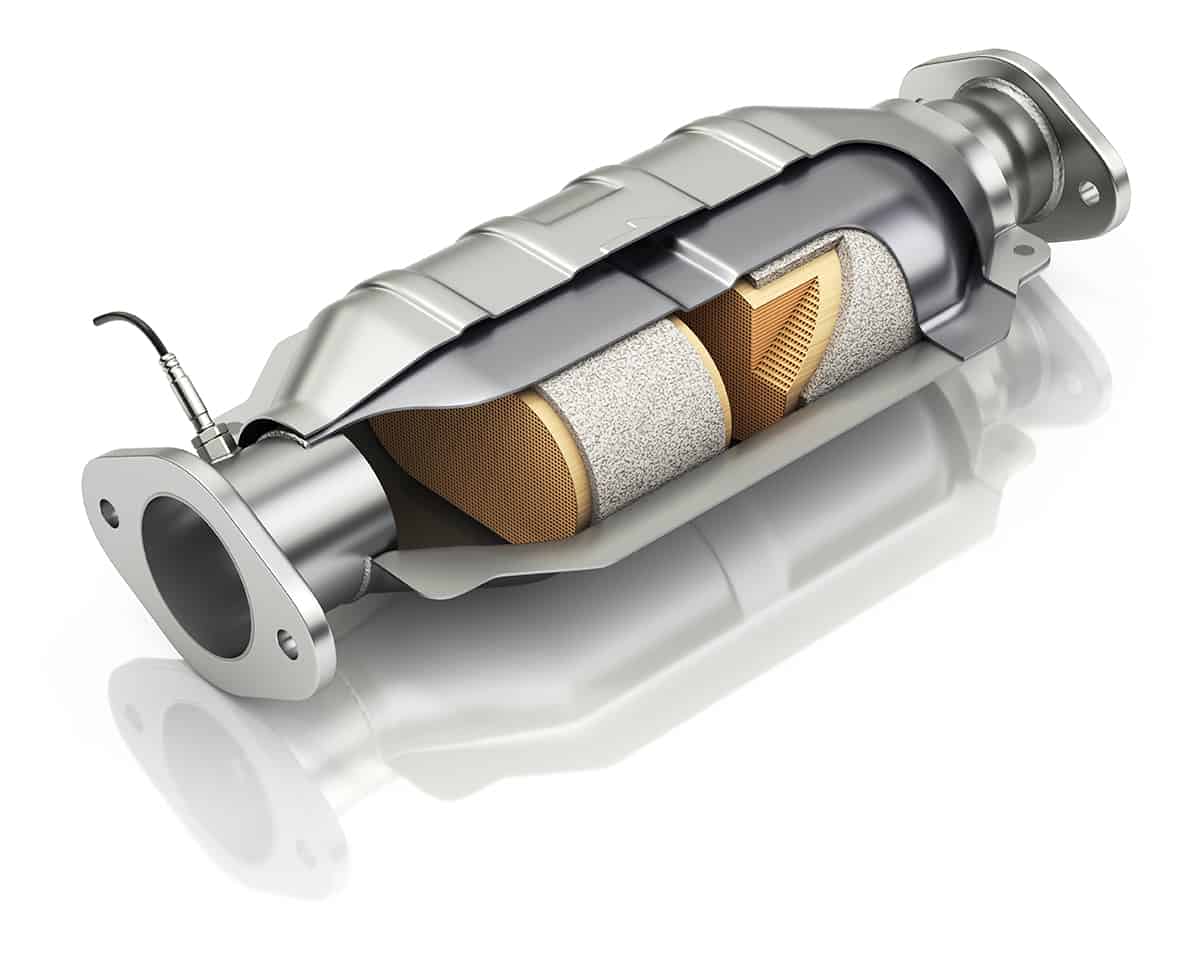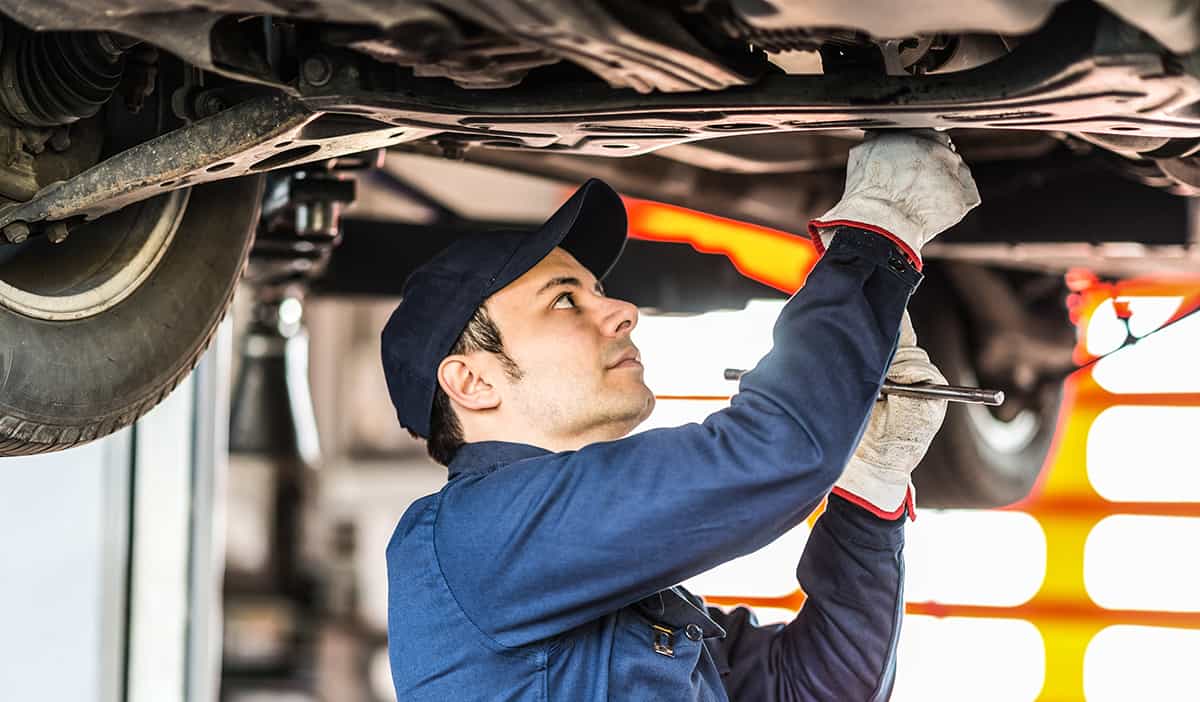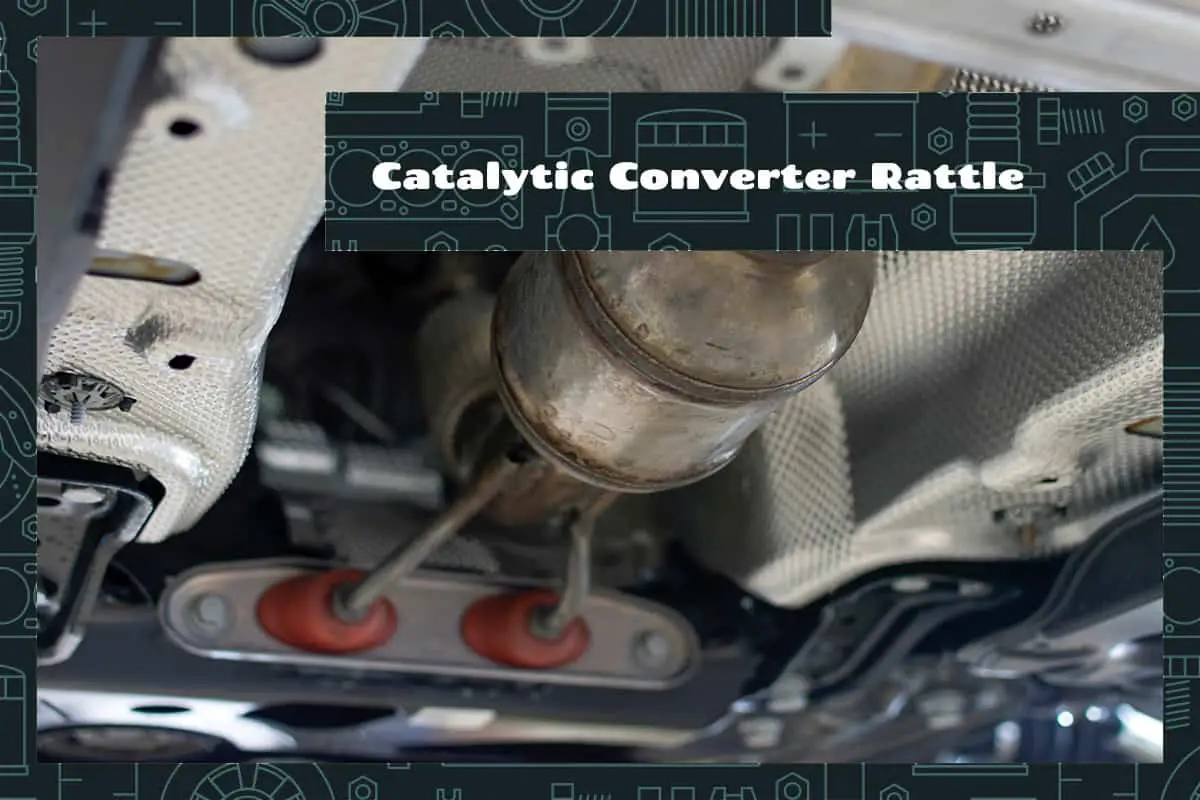Catalytic converters, an integral part of your vehicle’s exhaust system, play a pivotal role in reducing harmful emissions. They accomplish this through a series of chemical reactions that convert pollutants into less harmful substances.
Yet, like any other part of your vehicle, they can face issues. One of the most common and noticeable is the catalytic converter rattle, a sound that often leads to headaches for car owners.
Catalytic converter rattling noises primarily originate from:
- Loose substrate: The internal honeycomb structure can break or loosen over time.
- Damaged housing: If the outer shell of the converter is dented or damaged, it could lead to internal components shaking.
- Worn-out mounts: The fasteners keeping the catalytic converter in place may have failed.
In this comprehensive guide, we’ll delve deeper into understanding catalytic converter rattle, exploring its causes, symptoms, and effects. We’ll also shed light on diagnosing and addressing this issue.
The Science Behind Catalytic Converter Rattle
A catalytic converter rattle is an unsettling sound originating from your vehicle’s exhaust system. It’s similar to shaking a metal box filled with small rocks and is often more noticeable when you start the vehicle or during acceleration. This rattle, though a mere noise annoyance for some, can be a significant red flag indicating a potentially bigger problem.
The Anatomy of a Catalytic Converter

Catalytic converters are intricate devices comprised of several components:
- Ceramic honeycomb or metallic substrate: This is the core of the converter where the magic happens. Coated with catalysts like platinum, rhodium, and palladium, it facilitates the chemical reactions that transform harmful pollutants into less damaging substances. The honeycomb structure maximizes surface area for these reactions to take place.
- Washcoat: This is a special layer applied to the substrate that enhances the effectiveness of the catalysts, ensuring the maximum amount of pollutants come into contact with them.
- Housing or Shell: The substrate and washcoat are encased in a robust steel housing, designed to withstand high temperatures and harsh driving conditions. This shell also contains a layer of insulation to protect the substrate and keep the heat within the converter.
- Heat Shields: These external components prevent the extreme heat produced by the catalytic converter from damaging nearby parts of the vehicle.
Why Do Catalytic Converters Start to Rattle?
Catalytic converter rattle occurs when parts within this complex assembly become loose or damaged. Here are the main causes:
- Broken or loose substrate: Over time, due to thermal stress or physical impact, the substrate can crack, break or become loose. As the loose pieces move around inside the housing, they produce a rattling sound.
- Damaged housing: The converter’s shell can be dented or damaged due to road debris or a collision. This could dislodge the substrate, again causing a rattle.
- Failed or worn-out hangers and mounts: These components hold the catalytic converter in place. If they fail, the converter may shake, leading to rattling sounds.
In less extreme cases, a foreign object like a pebble could also get trapped inside the converter and cause a rattle.
Common Symptoms of Catalytic Converter Rattle
If you notice any of the following performance or visual symptoms along with the catalytic converter rattle, your vehicle may be experiencing a more serious issue:
Performance Indicators
- Reduced acceleration and power: The broken parts inside a catalytic converter can create an obstruction in the exhaust flow. This blockage can result in reduced engine power and poor acceleration.
- Decreased fuel efficiency: An inefficient exhaust system may cause your engine to run rich (more fuel than needed), which can lead to lower gas mileage. You may find yourself needing to refuel more frequently.
- Difficulty starting the vehicle: If the converter is severely blocked, it may prevent the engine from expelling exhaust gasses, causing starting problems.
Visual Signs
- Exhaust pipe discoloration: An overly hot converter can lead to a blue or discolored exhaust pipe.
- Physical damage: A dented or damaged converter housing can indicate potential internal problems leading to the rattle.
- Smoke or fumes: In severe cases, a damaged converter can cause smoke or fumes to emanate from the exhaust pipe.
The Impact of a Rattling Catalytic Converter

A rattling noise coming from your catalytic converter isn’t just annoying, but it has real-life impacts that affect the environment and your vehicle.
Environmental Impact
The catalytic converter is responsible for transforming harmful exhaust emissions into less hazardous substances. A damaged or rattling converter can fail to do this job effectively. Here’s what could happen:
- Increased emissions: Inefficient operation can lead to increased emissions, causing your vehicle to fail an emissions test, which is required in many regions.
- Environmental harm: The increased emission of harmful substances like nitrogen oxides, carbon monoxide, and hydrocarbons contributes negatively to air quality and exacerbates environmental issues like smog and acid rain.
Damage to Other Vehicle Components
A faulty catalytic converter doesn’t just impact its immediate environment. It can also have a domino effect, leading to potential damage to other parts of your vehicle:
- Damage to the engine: A severely clogged converter can cause exhaust gasses to back up into the engine, potentially causing overheating and severe engine damage.
- Impact on Oxygen Sensors: Malfunctioning catalytic converters can affect the vehicle’s oxygen sensors, leading to incorrect air-fuel mixture adjustments and further reducing the engine’s performance and efficiency.
- Damage to the exhaust system: The physical rattling or shaking of a damaged converter can cause wear and tear to the surrounding components of the exhaust system.
Resolving Catalytic Converter Rattle
If you suspect a faulty catalytic converter, here’s what you should do.
Professional Diagnosis
The first step to resolving catalytic converter rattle is getting a professional diagnosis. While the symptoms discussed earlier can provide indications, an accurate diagnosis requires a thorough examination by an experienced mechanic. They will perform various tests, including:
- Visual Inspection: Checking the external condition of the converter for any damage or discoloration.
- Sound Test: Listening for the distinctive rattle or any abnormal noises from the exhaust system.
- Pressure Test: Measuring the exhaust back pressure to identify any obstruction within the catalytic converter.
- OBD-II Scan: Using an On-Board Diagnostics (OBD-II) scanner to check for related error codes stored in the vehicle’s computer system.
Catalytic Converter Repair
Whether a catalytic converter can be repaired depends on the severity and nature of the damage. Here are a few possible scenarios:
- Fixing loose components: If the rattle is due to loose mounts or hangers, these can be tightened or replaced to secure the converter.
- Removing foreign objects: If a foreign object is causing the rattle, a professional might be able to remove it without needing to replace the converter.
- Minor substrate damage: In some cases, minor damage to the substrate might be repairable, although this is less common.
Catalytic Converter Replacement
If the damage to the catalytic converter is severe, replacement is often the most effective solution. Here’s what you need to know:
- Cost: Replacing a catalytic converter can be expensive due to the high cost of the parts, particularly the precious metals used in the catalysts. The catalytic converter itself can range in price from $300 for a basic aftermarket converter to over $1000 for a high-quality OEM part. The wide range is due to the precious metals used in the catalysts.
- Installation: This is a complex process that should be performed by a professional to ensure proper fit and functionality. The installation cost can vary widely based on your vehicle make and model and the mechanic’s hourly rate. Generally, you can expect labor costs between $75 and $200.
- Aftermarket vs. OEM: You’ll have the choice between aftermarket and Original Equipment Manufacturer (OEM) converters. While aftermarket converters are usually cheaper, OEM converters typically offer a more precise fit and longer lifespan.






